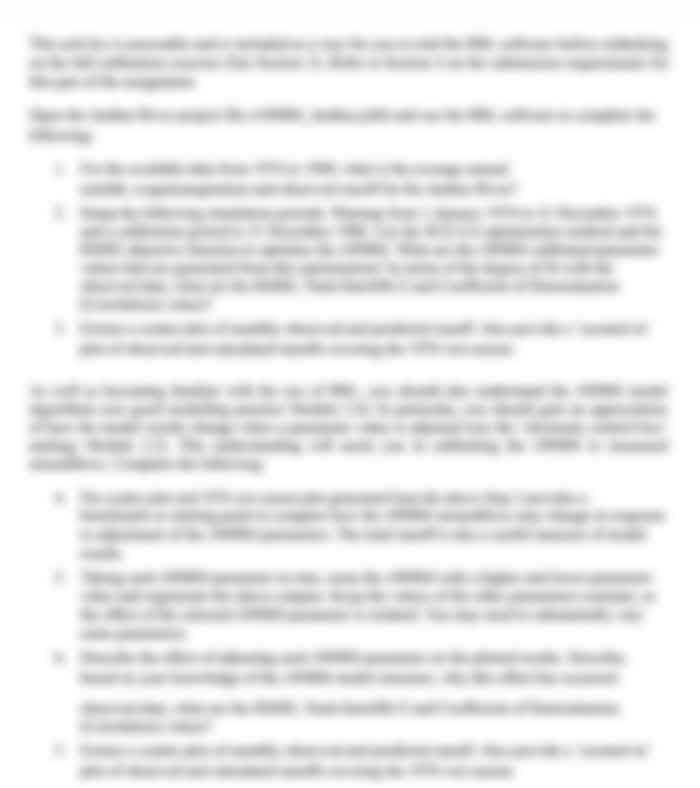Table of Contents
Project Management
Table of Contents
TOC o "1-3" h z u Introduction PAGEREF _Toc163929181 h 3Main Body PAGEREF _Toc163929182 h 3Conclusion PAGEREF _Toc163929183 h 6References PAGEREF _Toc163929184 h 7
Statement to challenge: The use of project-oriented in organizations, including the application of group dynamics theories by team leaders and members, is a short-term fad that does not improve project outcomes.
IntroductionThe success of an organization relies much more on effective teamwork which has sparked an increment in interest in the concept of team dynamics. Group dynamics is referred to as a complex study field that aims to understand the way an individual behaves in groups and the way the social system works in the groups. This generally entails looking at processes, connections, and interactions between people in the group and the way those things impact the group as a whole (Belbin , 1993). A huge range of disciplines including organization science, management, social science, and psychology have conducted wide research on effective leadership and team dynamics that are necessary for the success of an organization. Despite this, some individuals contend that efficient team leadership is not essential to promote success and team cohesion and that comprehension of the group dynamics in teams does not provide insight into factors that impact the behavior of individuals. This paper mainly challenges the claim that comprehension of group dynamics in the team does not provide insight into variables influencing behavior and effective team leadership which can help the team to succeed.
Main BodyGroup dynamics is referred to as the empirical investigation of the behavior of small groups. It alludes to the forces in social groups. The utilization of knowledge regarding these forces in order to achieve an objective is the way a group interaction is implemented functionally. A group includes at least two people who come together for a specific purpose, engage in communication depend on each other, and have an impact on each other (Buffinton, Jablokow and Martin, 2002). One of the most hugely accepted frameworks of team roles for team management and development was established by Berlin in 1993. His research shows that the difference that exists between successful and successful teams does not lie in aspects like experience and intellect but lies majorly in behavior. The way the team members interact with each other make their decisions and implement their abilities to reach the aim of the team is also presented in his research. According to the team role theory, people in the team are likely to assume different roles in a team which are defined as the tendency to contribute, interrelate, or behave with other people in a certain manner. The author proposed that for optimal operation of a team, the team roles that are related to 8 personalities are required to be fulfilled (Delice, Rousseau and Feitosa, 2019). The researcher also argued that the technique of composition of the recognized roles of the team to form the team proved to be decisive for the success of a team, hence it is considered among the prime factors that impact the performance of a team. The theory of Belbin also highlights the processes of the theory of Belbin also highlights that the processes of teamwork are not evaluated on two-dimensional scales of people who work less or more or who are much more intelligent. The members of a team frequently misunderstand and misjudge each other which frequently leads to problems and conflicts in a team (Dust and Ziegert, 2015). The theory presents that high intelligence is not a benefit of teamwork necessarily. The team members who have average intelligence have been proved to perform better frequently when they take up communication, delegation, or communication in the groups instead of team members who are intelligent highly.
The emphasis can hence be attributed to people who highlighted the way group analysis can demonstrate the mechanism that resulted in behavioral reactions in the groups by mainly realizing that those patterns are found to be multi-level as they engage both the individual and group participants presenting a group. Various current researchers have paid attention to the way people can generate collective procedures and the way those procedures evolve can better discuss group dynamics (Oyefusi, 2022). The members have the ability to interact with their peers through several channels which people refer to as social networks collectively in order to share perspectives and learn from the observations and knowledge of each other. When discussing several challenges of culture, the concept of social learning is utilized often. It mainly emphasizes the value of using knowledge from lots of backgrounds in order to find answers to the actual issues. Social learning mainly happens when the participants share knowledge in an immersive procedure to generate confidence and new knowledge that serves as the cornerstone for the coordinated efforts. In accordance with the theory of social learning, dealing with serious problems needs a diversity of participants in priorities, desires, beliefs, and experiences. Within the specified timeframes, the value of the collective level influences certain actions which outcome in group-level value. Both the theory of social information processing and social learning are two hugely utilized frameworks that support the claim that might be pertinent to the perceptions, values, and connections that make up the concept that is evolving. Since, learning engages memory, motivation, and perception, the theory of social learning incorporates behavioral and cognitive systems.
Some of the researchers have demonstrated that leadership is a social procedure where leaders influence and direct followers toward acquiring an objective. While a team might have just one leader it is much more important to consider that the other members play significant leadership roles at any ability in the team. In order to achieve the objective of the team, it is essential to have a leader who understands the dynamics of the group, does a weak leader might hinder a team from reaching their goal (Rowold, 2011). Other researchers stated that the style of leadership is an important determinant in the failure or success of an organization. It is referred to as the role of the leaders to drive the performance and take the group to greater heights mainly by leading individuals of different backgrounds, values, personalities, and different skills. This also leads the individual into a team that is productive. Hence, it is important to consider that the right style of leadership helps the leaders either generate division or cohesion in a group that may either negatively or positively impact the process of team building and the entire performance of the group. It can be proved that a link between the style of leadership group success and group dynamics is there it can also be considered that the styles of leadership of the ability to transform the members of a group from individuals to an efficient group or mediocre level or inefficient team.
Critical theories from the context of organization science, management, social science, and psychology challenge the claim that comprehension of the group dynamics in teams does not provide insight into variables that impact the behavior of people and that of the team members nor it does enable the effective theme leadership to facilities team success and cohesion (van der Haar et al., 2017). The theory of social identity is referred to as a critical theory which is associated with group dynamics. In accordance with this theory, the individual would favor their out-groups over in-groups as their self-sense is derived from belonging to groups. Buyers and conflict between the groups might result from this. By motivating a strong sense of group identity in a team and cultivating a positive relationship between the team members efficient team leadership of the ability to counteract the negative impacts of the theory. Increased collaboration and cooperation might result from this which might have some favorable effect on the group dynamics. According to the theory of social identity social identity of an individual is referred to as the portion of self-concept that has been derived from membership in a group. It has been also derived from the personal identity of the individual. This implies that the attitudes and behaviors of the team members are influenced by their identification with the teams as well as their personal values and beliefs. The attitude and behaviors of the team members along with the effect on team cohesion should be understood in the context of group dynamics in teams. By promoting a powerful sense of identity among team members, a leader can utilize this theory in order to promote unity and cohesion. In the evolving model collective and individual dimensions are influential are equally influential and adaptable (Zaleznik, 2004). The value of collective level influences the behavior that produces the value of group level 1st while the conventional studies indicate community and principle facilitated conflict resolution as well as collective efficacy, some of the studies have been found that have utilized the philosophy of competitiveness and teamwork in order to explain potential dynamics through which the principles exert their influence.
ConclusionBy analyzing the way important components of dynamics are being embedded in the contemporary group literature this paper mainly aims to offer a comprehensive due of the basic concept of group dynamics with regards to several theories from past to present. Group identification, conflict, and trust are a few of the factors of the group that were discussed in the paper understanding the group dynamic leaders in making better decisions which increases efficiency and productivity while improving the behavior of team members.
ReferencesBelbin , M. (1993). 7 reasons why collaborative leadership beats solo leadership hands down. [online] www.belbin.com. Available at: https://www.belbin.com/resources/articles-directory/solo-vs-team-leadership.
Buffinton, K.W., Jablokow, K.W. and Martin, K.A. (2002). Project Team Dynamics and Cognitive Style. Engineering Management Journal, 14(3), pp.2533. doi:https://doi.org/10.1080/10429247.2002.11415170.
Delice, F., Rousseau, M. and Feitosa, J. (2019). Advancing Teams Research: What, When, and How to Measure Team Dynamics over Time. Frontiers in Psychology, [online] 10(12). doi:https://doi.org/10.3389/fpsyg.2019.01324.
Dust, S.B. and Ziegert, J.C. (2015). Multi-Leader Teams in Review: A Contingent-Configuration Perspective of Effectiveness. International Journal of Management Reviews, 18(4), pp.518541. doi:https://doi.org/10.1111/ijmr.12073.
Oyefusi, F. (2022). Team and Group Dynamics in Organizations: Effect on Productivity and Performance. Journal of Human Resource and Sustainability Studies, [online] 10(01), pp.111122. doi:https://doi.org/10.4236/jhrss.2022.101008.
Rowold, J. (2011). Relationship between leadership behaviors and performance. Leadership & Organization Development Journal, 32(6), pp.628647. doi:https://doi.org/10.1108/01437731111161094.
van der Haar, S., Koeslag-Kreunen, M., Euwe, E. and Segers, M. (2017). Team Leader Structuring for Team Effectiveness and Team Learning in Command-and-Control Teams. Small Group Research, [online] 48(2), pp.215248. doi:https://doi.org/10.1177/1046496417689897.
Zaleznik, A. (2004). Managers and Leaders:Are They Different? [online] Harvard Business Review. Available at: https://hbr.org/2004/01/managers-and-leaders-are-they-different.

